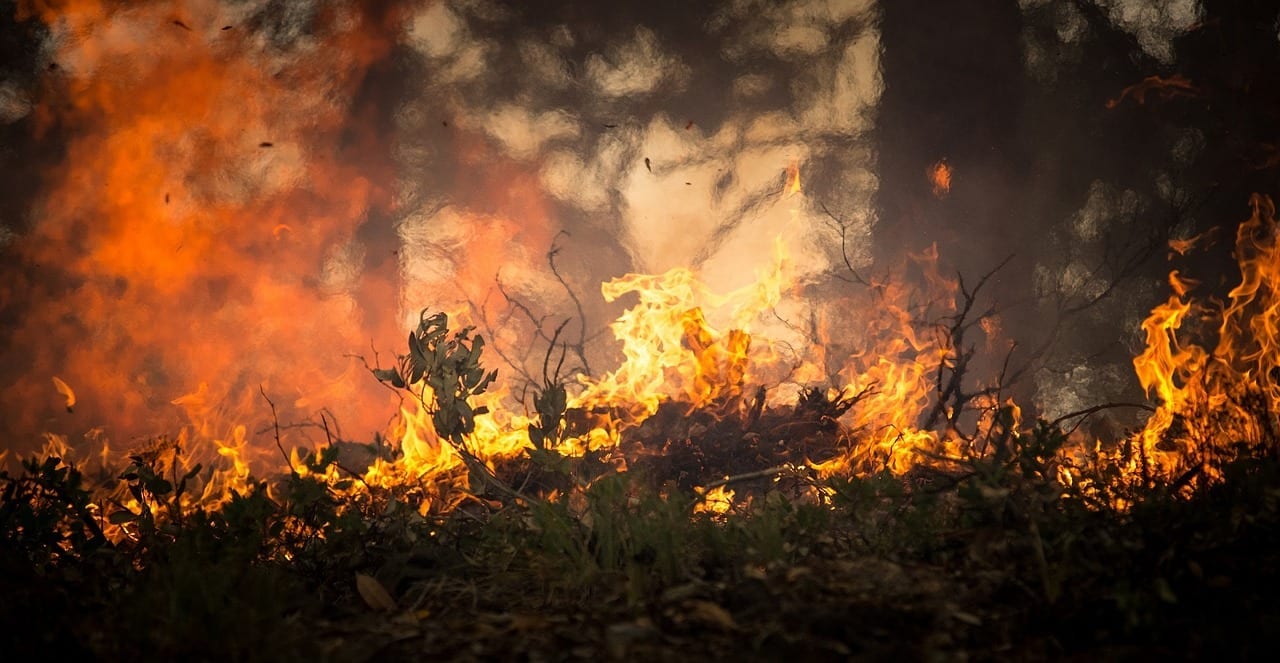The Western United States is experiencing one of the worst fire seasons in recent history. Dozens of wildfires are burning across multiple states, taxing wildland firefighters and government resources. With the massive amount of fires burning, air quality in the West has significantly declined, resembling a dark and thick haze, that challenges the respiratory system of even healthy people. Here are seven essential oils that can aid lung and sinus function during these times of bad air.
People most vulnerable to smoky air
While many healthy people remain unaffected by the smoky air, sensitive individuals and those with existing health conditions are the most vulnerable to the negative effects of bad air. Children are particularly susceptible to the harmful effects of smoky air due to their more rapid breathing rate. On the opposite side of life, the elderly — who are more likely to have other health conditions — can easily succumb to bad air. People with heart (heart failure, angina, ischemic heart disease) and lung diseases (asthma, emphysema, pneumonia, bronchitis, COPD) are likely to experience chest pain, coughing, shortness of breath, and wheezing. Pregnant women should also be very cautious in these conditions as the air could potentially affect both the mother and the developing baby. Even healthy individuals aren’t immune to the effects. They can experience burning eyes and throat, chest pain, excess mucus production, and difficulty breathing if too much time is spent outdoors.
How smoky air affects the respiratory system
When wood and other organic matter burns it produces a mixture of gases — fires can boost ozone pollution by releasing nitrogen oxides and hydrocarbons — and particulate matter. These microscopic particles are particularly concerning because they penetrate deeply into the lungs and cause a range of health problems, from a mild runny nose to chronic lung disease. Particulates produced by wildfires promote acute inflammation, oxidative stress, bronchospasm, and reduced immune responses to infections according to research. Additionally, individuals with a chronic respiratory condition (astham, COPD) or an acute lower respiratory tract infection may experience airway hyperresponsiveness, which is an exaggerated tendency of the airways (bronchi and bronchioles) to constrict. Younger children’s airways are narrower than adults and so they are more susceptible to irritation and significant obstruction of tightening of the airways. Exposure to fine particles is also linked to cardiovascular disease (1) and premature death. (2) It is best to limit time outdoors when significant smoke is present in the air and sensitive individuals should consider wearing a mask.
Essential oils that support overall respiratory system function
Essential oils are great remedies for the respiratory system due to their volatility. Their volatility allows them to enter both the upper and lower respiratory tract to influence complete respiratory function. In addition, their complexity (from a dozen to hundreds of constituents), multiple mechanisms of action, and multiple cell receptor targets make them an ideal solution to help you breathe easier during the most challenging situations.








How to use the essential oils
- Diffuse a combination of the above oils for at least 60 minutes, twice daily.
- Perform a steam inhalation of one or more of the above oils (cinnamon and thyme may be too strong) once daily. The steam may help improve mucus clearance.
- Dilute and apply eucalyptus, myrtle, peppermint, and ginger to the upper chest, once or twice daily.
- Consider taking a capsule with one drop each of myrtle, eucalyptus, orange, and lemon essential oils (simulates Myrtol), three to four times daily.
Conclusion
Hopefully, firefighters will get the fires in the West under control quickly. Pray for their safety and ability to do so. But, until then, use your essential oils to keep your respiratory system healthy, particularly if you are among the sensitive populations.*
* Note: If pregnant or under the care of a physician, consult your health practitioner prior to use. Some people with chronic respiratory systems may respond adversely to essential oils, so use with caution and under proper guidance.

Thank you for the timely blog post, Dr Johnson. I follow you on Facebook and have one of your books. My husband has Pulmonary Langerhans Histiocytosis and is really struggling these days with the bad air quality. We are going to get him on those capsules you recommend, We all ready diffuse the eucalyptus.
Thankfully I have most of these oils in my cupboard already.
Thank you for your information. Still a big fan of all your work and your resources.
Comments are closed.